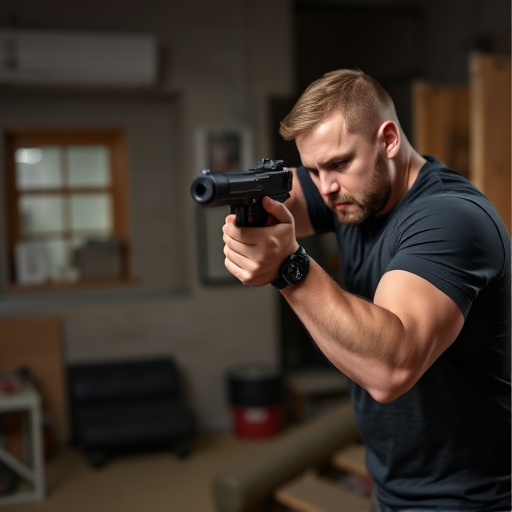Understanding the variable duration (2-10 minutes) of paralysis from tactical stun guns with LED flashlights is vital for safety. Factors like device model, user's attributes, environment, and application technique impact effectiveness. Proper training, assessment, and technique minimize risks and resolve situations quicker. This dual-purpose tool enhances visibility and protection in low-light scenarios, offering valuable navigation and deterrence.
“Discover the critical factors extending paralysis duration from taser deployment, a topic of growing interest within law enforcement communities. This article explores the science behind stun gun paralyzation time, shedding light on various influences such as subject’s health and physical condition. We delve into tactical considerations for optimal taser use, emphasizing strategies to enhance efficiency during high-pressure situations. Additionally, we examine the integration of LED flashlights in tactical stun guns, highlighting their potential benefits for nighttime operations.”
- Understanding Paralysis Duration After Taser Deployment
- Factors Influencing Stun Gun Paralyzation Time
- Tactical Considerations for Efficient Taser Use
- LED Flashlight Integration in Taser Design
Understanding Paralysis Duration After Taser Deployment
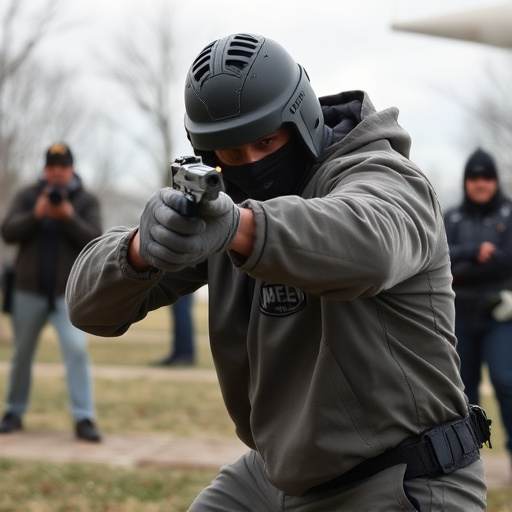
Understanding the duration of paralysis after a tactical stun gun deployment, like those equipped with an LED flashlight, is crucial for both law enforcement and civilians alike. The impact of a stun gun can cause muscular rigidity and temporary paralysis, but the length of this immobilization varies significantly based on several factors. Studies suggest that the average stun from these devices can leave a person incapacitated for 2-5 minutes, though this can range up to 10 minutes in some cases.
Knowing this timeframe is essential for ensuring safety during and after an encounter. For law enforcement, it helps in managing crowd control and preventing potential risks. Civilians carrying tactical stun guns for self-defense should be aware of the limitations and potential side effects, understanding that while it’s a powerful tool for deterrence and defense, prolonged paralysis isn’t guaranteed, and other means of escape or de-escalation strategies should always be prioritized.
Factors Influencing Stun Gun Paralyzation Time
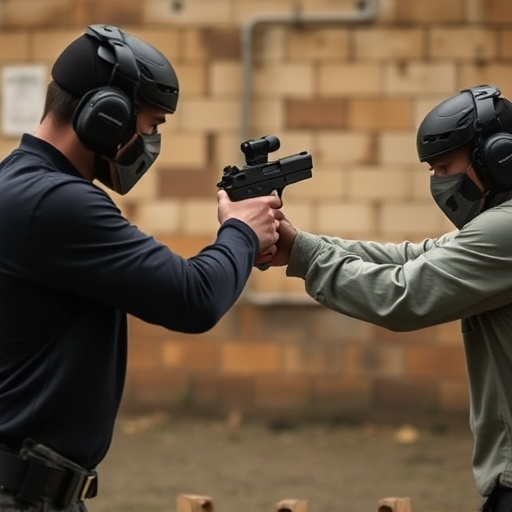
The duration of paralysis caused by a tactical stun gun with LED flashlight can vary widely due to several factors. One primary consideration is the model and power output of the device; higher voltage and current will generally result in longer periods of incapacitation. The user’s physical size, fitness level, and muscle mass can also play a role, as larger individuals may require more energy to achieve the same level of paralysis. Environmental conditions, such as temperature and humidity, can affect the performance of both the stun gun and the human body, potentially altering the duration of the stun.
Other factors include the target’s physical condition, including any pre-existing medical conditions or muscle stiffness; clothing and accessories, which can either enhance or impede current flow; and the location of the stun on the body. Proper application techniques by the user are crucial, as incorrect usage may lead to shorter or longer durations than intended. Understanding these variables is essential for users of tactical stun guns to ensure effective and safe deployment.
Tactical Considerations for Efficient Taser Use
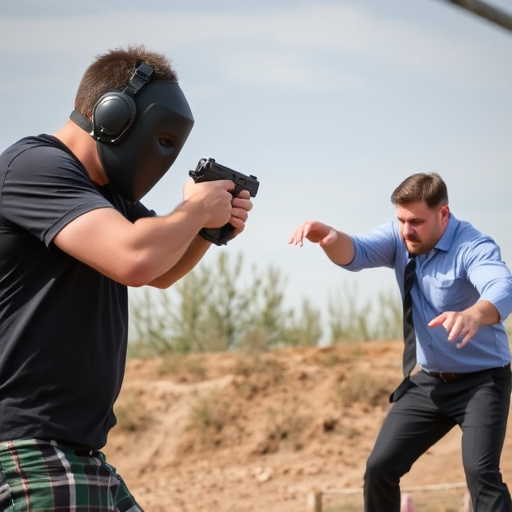
Tactical considerations are paramount when employing a tactical stun gun with LED flashlight, such as the Taser. Effective deployment requires understanding the device’s capabilities and limitations. Training ensures officers can accurately assess situations, minimizing the risk of prolonged paralysis. The stun gun’s high-intensity stun and integrated LED provide crucial visibility during low-light conditions, enabling swift decision-making.
Officers must consider distance, angle, and target area to ensure optimal effectiveness. Proper placement of the Taser can significantly reduce the duration of paralysis, minimizing potential risks and ensuring a quicker resolution. Efficient use depends on understanding when to deploy, how to aim, and the appropriate pressure to administer, all skills honed through rigorous training.
LED Flashlight Integration in Taser Design
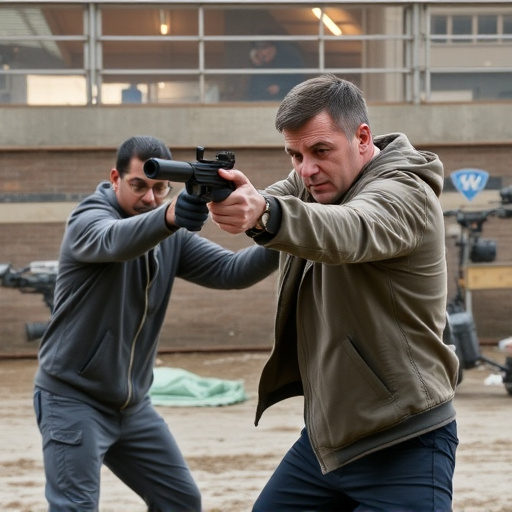
The integration of a tactical stun gun with an LED flashlight is a notable advancement in personal defense technology. This dual-purpose tool combines the power of a stun device with the brightness and versatility of a high-intensity LED flashlight, offering users enhanced visibility and protection during low-light or emergency situations. The LED flashlight component not only aids in navigating dark environments but also serves as a powerful deterrent when activated alongside the stun gun’s electric charge.
This innovative design allows users to quickly switch between lighting and stun modes, ensuring they are prepared for any eventuality. In high-stress situations, having a reliable light source built directly into the stun gun can prove invaluable. The LED flashlight’s brightness and durability complement the stun gun’s effectiveness, making it a comprehensive choice for law enforcement officers, security professionals, and individuals seeking advanced self-defense solutions.
In conclusion, understanding the duration of paralysis after taser deployment is crucial for effective law enforcement tactics. By recognizing the factors influencing paralyzation time, such as target size and muscle mass, officers can optimize their use of this powerful tool. Integrating a tactical LED flashlight into the design enhances both visibility and safety during low-light scenarios. With these strategic considerations in mind, first responders can ensure maximum efficiency while minimizing risk when employing a tactical stun gun with LED flashlight.
